Seamless vs Sectional Gutters in VA
Contents
Choosing between seamless gutters and sectional gutters in Virginia has major consequences for your home’s protection, durability, and long-term maintenance. Sectional gutters may seem appealing for their lower initial price and DIY installation, but their many joints quickly become weak points that lead to leaks, clogs, and premature failure. In Virginia’s demanding climate - with about 43 inches of annual rainfall, heavy spring storms, and freeze-thaw cycles - these connection points often turn into costly water damage risks.
By contrast, seamless gutters are custom-fabricated to fit your home, eliminating joints every 10 feet and creating smooth, uninterrupted water channels that resist leaks and debris buildup. This design makes them more durable, lasting 20–30 years in aluminum and up to 50+ years in copper, compared to sectional gutters’ 10–15 years. For Virginia homeowners, seamless gutters consistently deliver superior performance, reduced maintenance, and reliable foundation and roof protection.
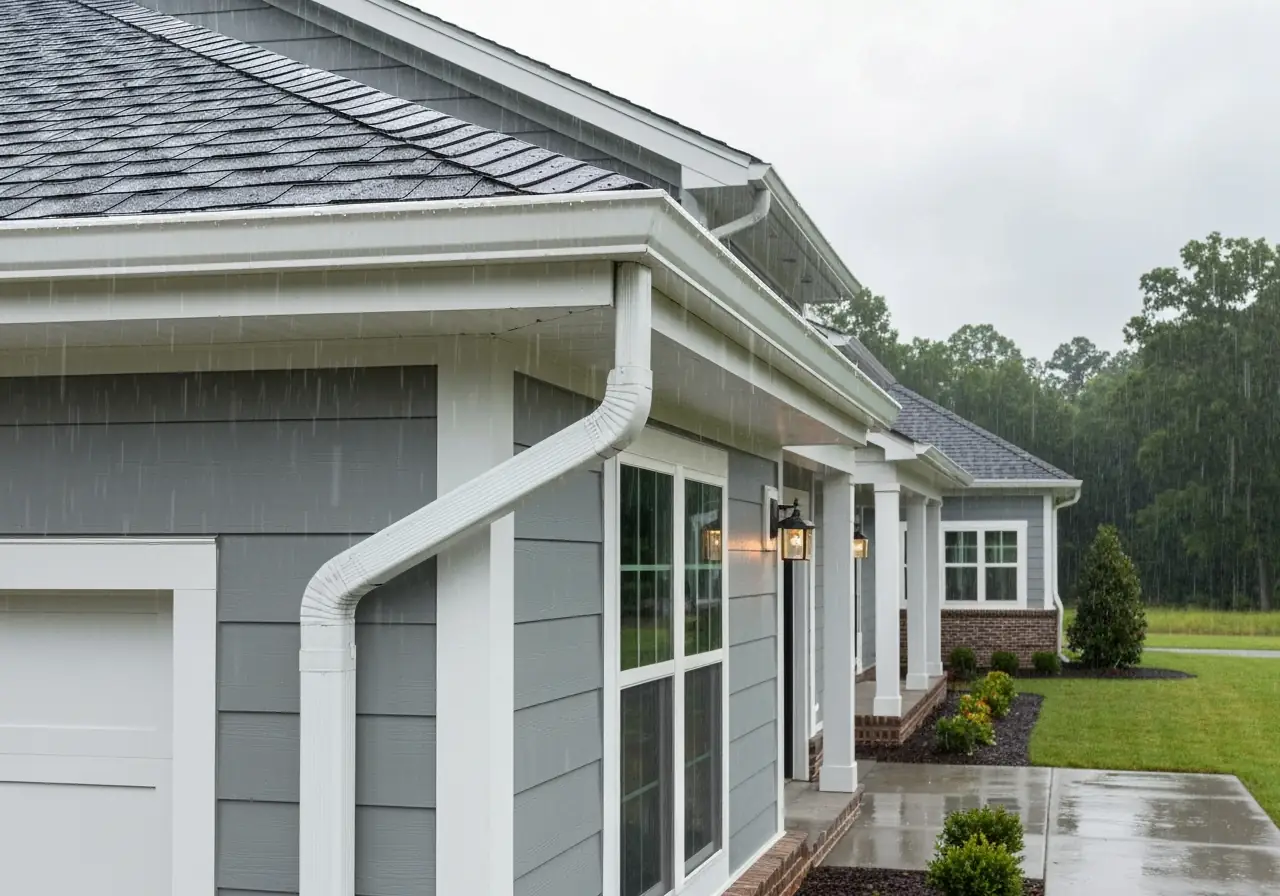
Understanding Seamless vs Sectional Gutters
Gutter system construction determines everything from water flow efficiency to maintenance frequency across decades of service. The structural approach - continuous versus segmented - creates fundamental performance differences that affect Virginia homeowners' long-term costs and protection levels.
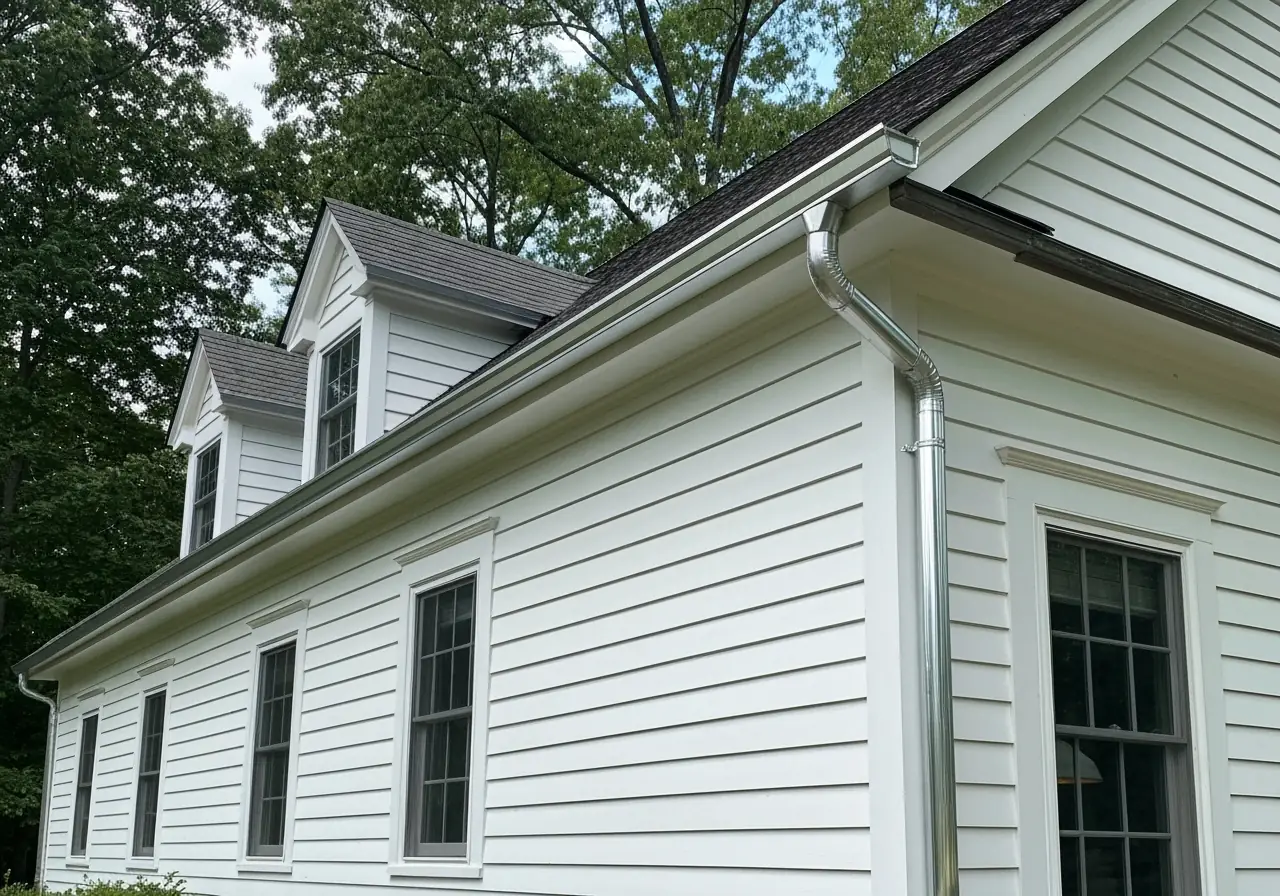
Design Structure: Continuous vs Segmented Systems
Seamless gutters originate from a single piece of material custom-fabricated to match your home's exact measurements. Specialized equipment forms these continuous sections on-site, eliminating joints along each run's entire length. Seams appear only at corners where gutters transition around roof angles and at downspout connection points.
Sectional gutters utilize pre-cut segments typically measuring 10 feet that installers connect around your home's perimeter. Each segment requires couplings or connectors that create visible seams approximately every 10 feet. These connection points represent the system's inherent vulnerability - expansion, contraction, and settling gradually compromise joint integrity over time.
Material Options: Aluminum, Copper, Vinyl, and Steel
Material selection influences both system performance and longevity regardless of construction method, though availability varies between seamless and sectional options.
Aluminum seamless gutters dominate installations due to their lightweight properties, resistance to rust and corrosion, and extensive color availability. The material forms easily during on-site fabrication while maintaining structural integrity throughout Virginia's temperature fluctuations. Copper gutters represent the premium choice, developing distinctive patina while potentially lasting 50+ years, though installation costs increase significantly.
Steel gutters provide maximum strength for regions experiencing heavy snow loads but demand protective coatings to prevent rust formation. Vinyl gutters offer the most economical material option, primarily available in sectional configurations, yet their performance limitations become apparent during Virginia's extreme weather conditions.
Seamless vs Non Seamless: What It Really Means
The "seamless" designation creates occasional confusion since even continuous systems contain some connection points. Traditional sectional installations feature joints every 10-20 feet plus additional seams at corners and downspouts. These connection points become debris collection zones and potential leak sources as sealants deteriorate and thermal cycling loosens connections.
True seamless gutter solutions eliminate intermediate joints, maintaining continuous material except at corners and downspouts where directional changes require connections. This design philosophy enables uninterrupted water flow without connectors that restrict drainage or create turbulence patterns that might deposit debris. The reduction in potential failure points translates directly into improved long-term reliability and reduced maintenance requirements.
Protect your Virginia home with seamless gutters built to last. My Modern Renovations custom-installs systems that resist leaks, reduce maintenance, and safeguard your foundation. Get your free estimate today.
Durability and Performance in Virginia's Climate
Virginia's humid subtropical climate creates a demanding test environment for gutter systems throughout the year. The state's weather patterns subject gutters to freeze-thaw cycles, heavy precipitation events exceeding 2 inches per hour, and substantial seasonal debris loads that challenge both system designs differently.
Freeze-Thaw Resistance: Seamless vs Sectional
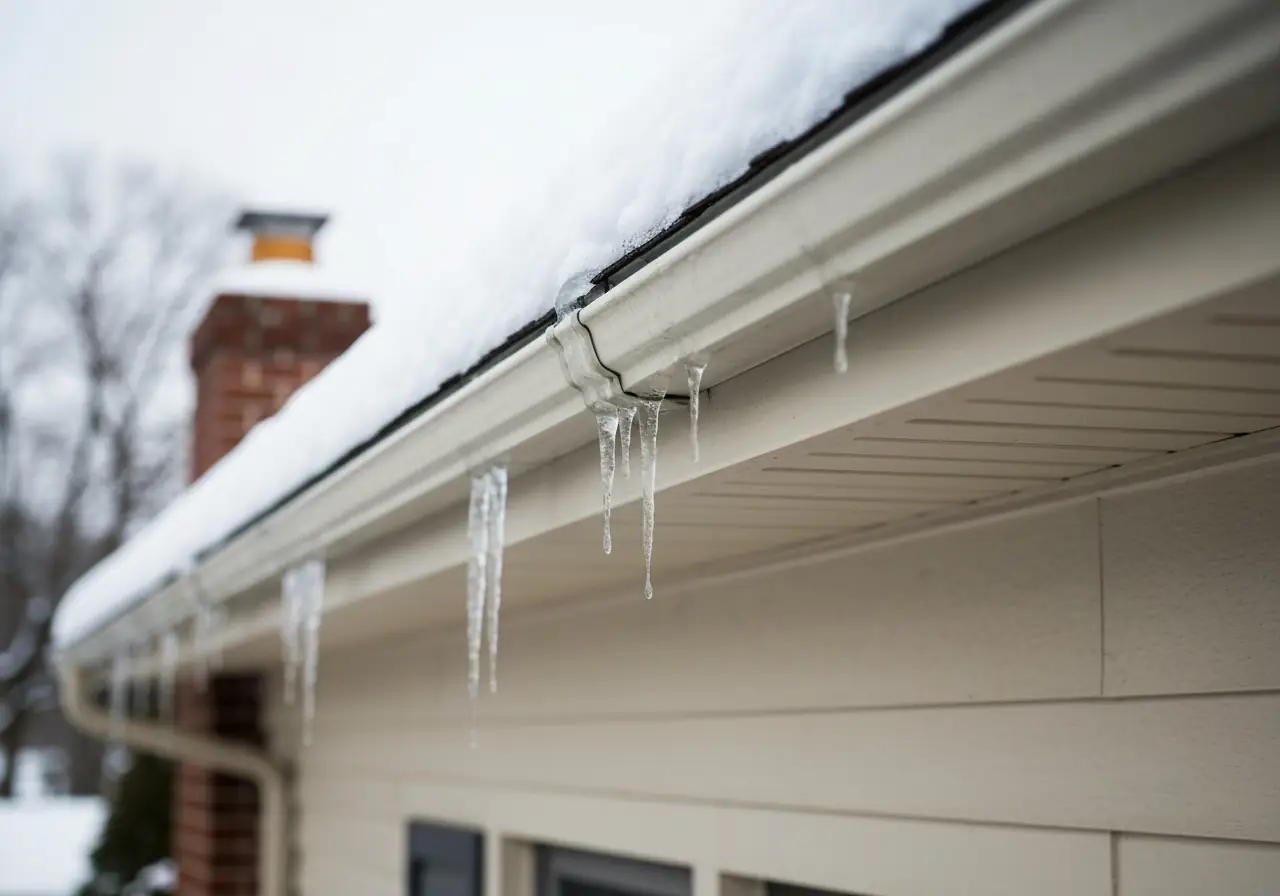
Winter freeze-thaw cycles expose the critical weakness of sectional gutter design. Water infiltrates joints during mild periods, then expands upon freezing - creating progressive joint separation that compromises system integrity. Sectional connections experience repeated stress as trapped moisture expands up to 9% in volume, gradually widening gaps at connection points.
Seamless gutters eliminate these vulnerable expansion zones by removing multiple joint locations where ice formation typically occurs. The continuous design prevents ice dams from forming at connection points, allowing thermal expansion and contraction to occur uniformly along the gutter length without concentrated stress points.
Rainfall Management: Leak Points and Overflow
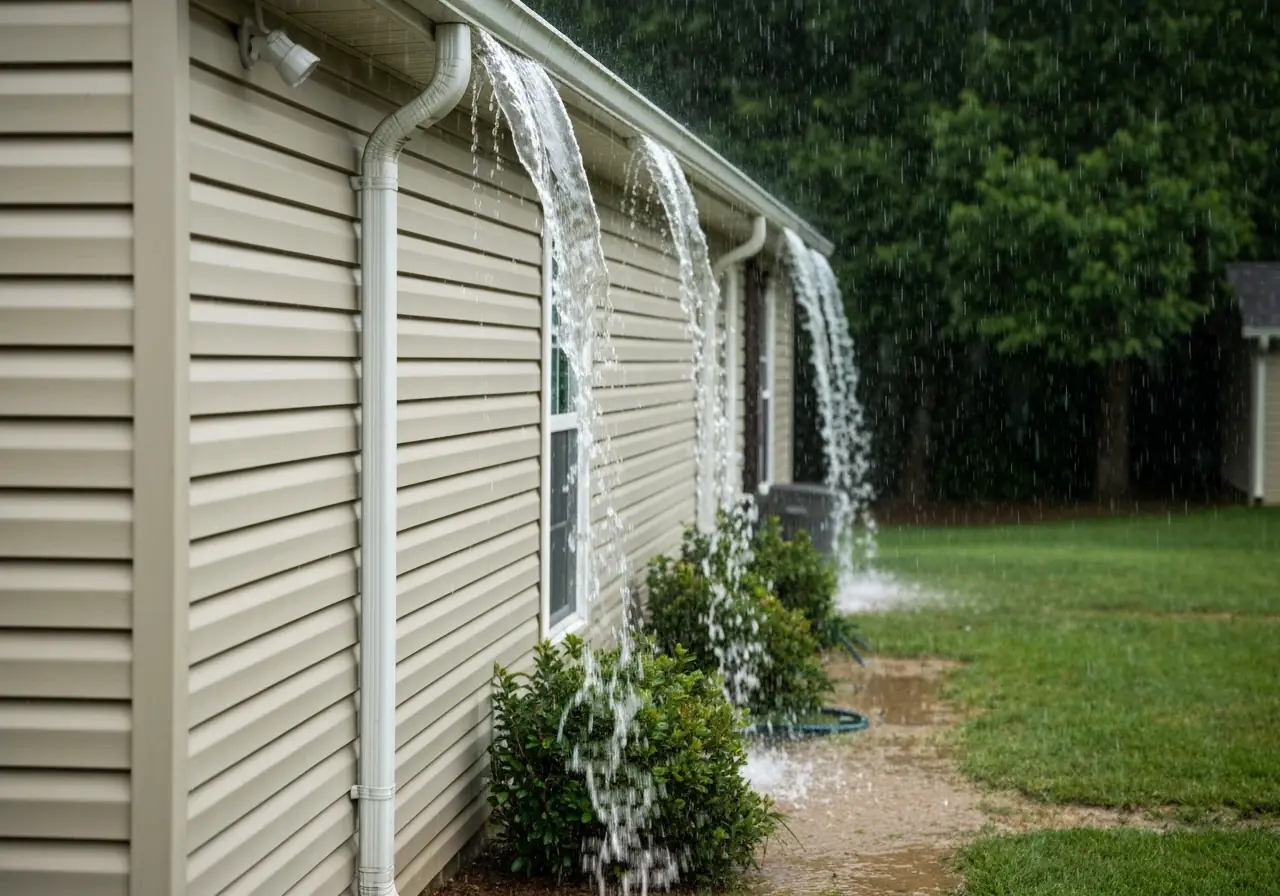
Virginia's spring and summer storm patterns reveal stark performance differences between gutter systems. Seamless rain gutters handle high-volume water flow without interruption, channeling precipitation continuously toward downspouts. Each sectional system contains approximately 15-20 potential leak points on a typical 150-foot installation - every joint represents a future failure zone.
Storm events exceeding 1.5 inches per hour overwhelm sectional systems more readily due to water backup at joints and restricted flow at connection points. Seamless systems maintain consistent internal diameter throughout their length, ensuring optimal water velocity and reduced overflow risk.
Seamless Gutter Lifespan: 20-30 Years vs 10-15 Years
The durability gap stems from fundamental construction differences. Sectional gutter failure typically begins at joints rather than material degradation - connection points deteriorate while the gutter material itself remains structurally sound. This premature joint failure necessitates complete system replacement despite adequate material condition.
The best seamless gutters achieve their extended 20-30 year lifespan by eliminating these early failure points. Copper seamless installations can exceed 50 years in Virginia's climate, justifying their premium material costs through exceptional longevity.

Impact of Seasonal Debris on Gutter Function
Fall leaf accumulation creates distinct performance patterns between systems. Sectional joints trap organic debris, creating collection points that accelerate corrosion through prolonged moisture contact. These debris dams at connections restrict water flow while promoting standing water conditions that damage gutter materials.
Seamless gutters feature smooth interior surfaces that facilitate debris movement toward downspouts. The absence of joints eliminates debris collection points, reducing cleaning frequency from quarterly sectional maintenance to biannual seamless upkeep - a 50% reduction in maintenance intervals.
Don’t let Virginia’s storms and freeze-thaw cycles damage your home. My Modern Renovations installs seamless gutters that resist leaks, handle heavy rainfall, and cut maintenance in half. Book your free estimate today.
Installation requirements
Installation requirements often shape which gutter system Virginia homeowners choose. The differences go beyond materials alone, involving labor needs, project complexity, and the overall impact on long-term performance and maintenance.
DIY-Friendly vs Professional Installation
Sectional gutters provide the only viable option for homeowners seeking hands-on installation projects. Hardware stores stock standard sections readily, and basic tools handle the assembly process without specialized equipment requirements. Weekend warriors frequently complete sectional installations using ladder access and standard hand tools.
Seamless systems eliminate DIY possibilities entirely. Custom-manufactured on-site using specialized machines, these systems require professional installation exclusively. The custom fabrication process demands equipment that travels to your property, measuring and forming continuous sections according to your home's exact specifications. Professional installers typically complete even complex projects in 1-5 days, though scheduling depends on contractor availability.
Gutter Replacement Virginia: Project Expectations
Virginia replacement projects begin with comprehensive property assessments examining roof pitch, drainage patterns, and layout requirements. Most installations complete within two weeks, minimizing disruption to daily routines. Replacement indicators include visible cracking, water damage evidence, overflow during storms, sagging gutters, or gaps between joints.
The replacement process varies dramatically between systems - sectional projects focus on measuring and fitting standard components, while seamless installations require precise measurements for custom fabrication.
Warranty Protection and Investment Analysis
Warranty coverage creates significant value differences between installation approaches. Professional installations include minimum 5-year labor warranties, with material coverage extending 20-50 years depending on construction materials. This protection represents substantial value considering potential repair costs.
DIY installations typically void material warranties, creating hidden financial risks that many homeowners overlook during initial cost comparisons. The warranty gap alone can justify professional installation costs when factoring potential claim values over the system's lifespan.
Long-term value calculations favor seamless systems despite higher initial investment. Reduced maintenance demands, extended operational life, and warranty protection combine to deliver superior financial returns over the ownership period. The crossover point typically occurs within the first decade when sectional systems begin requiring significant repairs or replacement.
Trust your gutter installation to professionals who get it right the first time. My Modern Renovations provides expert seamless gutter replacement in Virginia with precise on-site fabrication, full warranty coverage, and long-lasting protection. Schedule your free consultation today.
Maintenance and Aesthetic Fit for Virginia Homes
The maintenance burden difference between gutter systems dramatically affects your long-term ownership experience and costs. Virginia homeowners face distinct cleaning schedules, repair frequencies, and aesthetic considerations that directly impact both property protection and curb appeal.
Gutter Cleaning Frequency: Twice vs Four Times a Year
Seamless gutters require cleanouts approximately twice yearly due to their smooth interior surfaces that facilitate debris flow toward downspouts. The continuous design eliminates collection points where leaves typically accumulate, allowing water and debris to move efficiently through the system.
Sectional gutters demand attention approximately four times annually. Each 10-foot connection creates debris traps where leaves, twigs, and dirt collect - transforming routine maintenance into a recurring chore. These seam-based clogs quickly escalate into water overflow situations that threaten your home's foundation and landscaping.
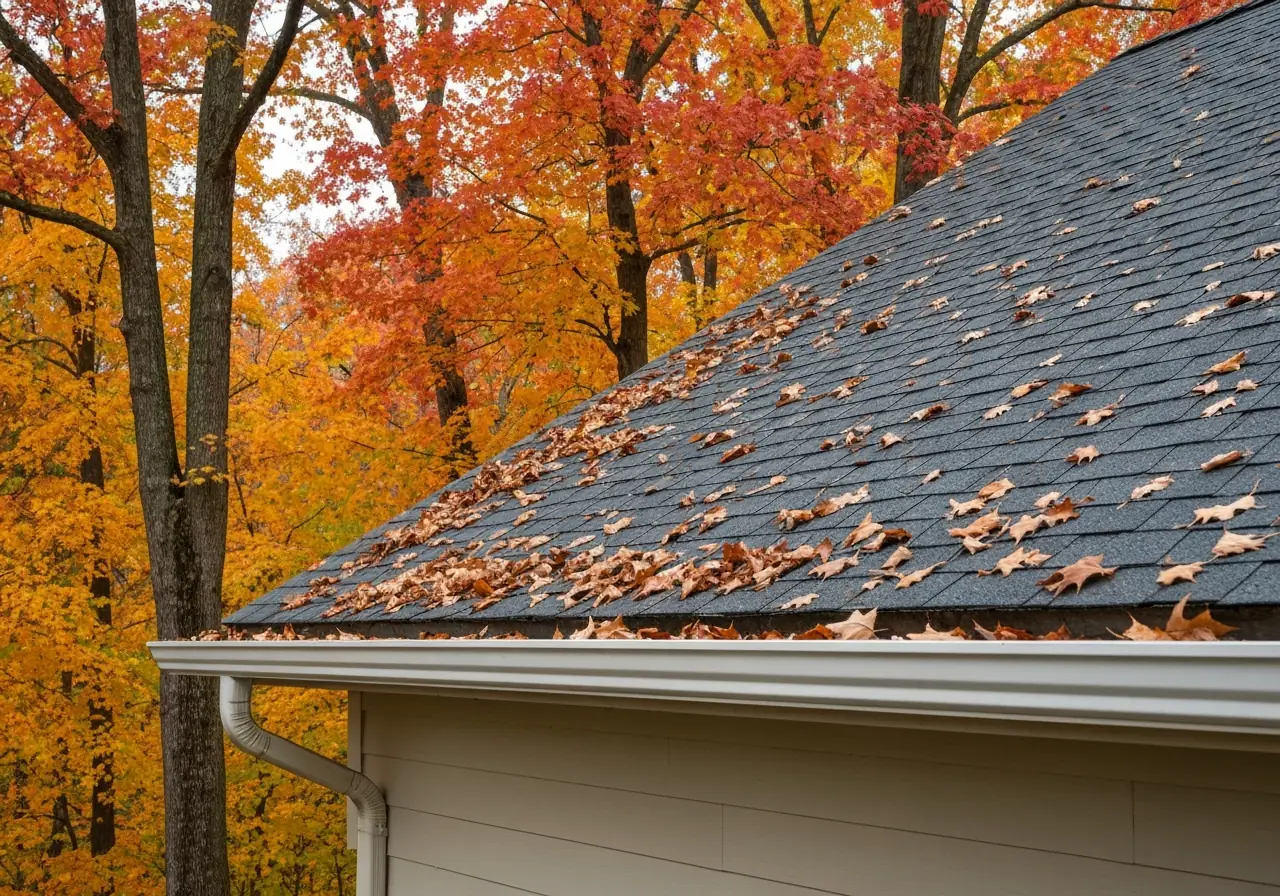
Sectional Gutter Leaks and Repair Needs
Every sectional joint represents a potential weak point where Virginia's temperature fluctuations create expansion and contraction stress. This seasonal movement gradually weakens seals, allowing water to escape at connection points. Accumulated debris weight compounds the problem by creating sag points where water pools instead of flowing toward downspouts.
Sectional gutter repairs follow a predictable pattern - clean the leaking joint, apply fresh sealant, and repeat the process as other connections fail. The maintenance cycle becomes relentless throughout the system's shortened lifespan. Seamless gutters eliminate these failure points entirely, reducing repair needs to occasional downspout maintenance.
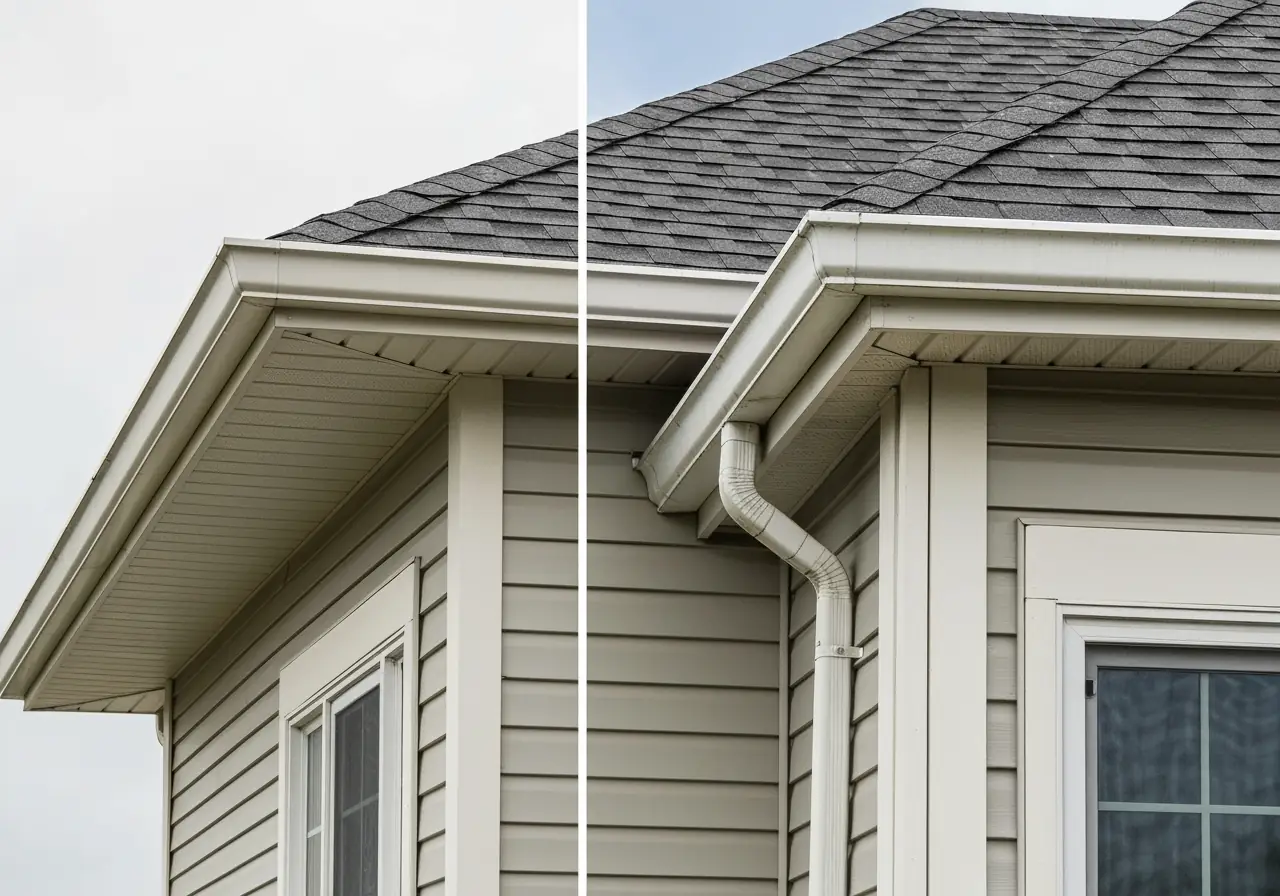
Visual Appeal: Clean Lines vs Visible Joints
The aesthetic difference becomes immediately apparent from street level. Seamless gutters create polished, uninterrupted lines that complement your roofline without visual disruption. Custom fabrication ensures perfect dimensional fit that enhances rather than detracts from architectural design.
Sectional systems feature visible connectors every 10 feet that interrupt the smooth flow of your roofline. These joints become increasingly prominent as weathering and age create gaps, discoloration, and misalignment that diminishes curb appeal.
Gutter Styles Virginia: K-Style vs Half-Round
K-style gutters dominate modern Virginia installations with their decorative front profile resembling crown molding. The flat back and bottom design maximizes water-carrying capacity - essential for handling Virginia's intense storm events.
Half-round gutters complement Virginia's historical architecture, particularly homes constructed before 1950. Their completely smooth interior promotes superior water flow while minimizing debris accumulation. This streamlined design typically requires less frequent cleaning despite their traditional appearance.
Conclusion
For Virginia homeowners, the choice between seamless gutters and sectional gutters comes down to long-term performance, maintenance, and protection. Sectional gutters, with their many joints, face recurring problems - leaks, clogs, and premature wear - especially under Virginia’s humid subtropical climate. Freeze-thaw cycles expand trapped water at joints, while heavy seasonal rainfall and falling debris overwhelm connection points.
By contrast, seamless gutters in Virginia eliminate these weak spots with a continuous design that channels water smoothly, resists leaks, and reduces maintenance needs. Their longer lifespan - 20–30 years for aluminum and over 50 years for copper - means decades of reliable service against storms, ice, and debris. Beyond durability, seamless gutters enhance curb appeal with clean rooflines that complement modern and traditional homes alike. Professionally installed seamless systems ensure proper drainage and warranty protection. For true peace of mind, seamless gutters are the best choice for Virginia homes, delivering strength, reliability, and lasting defense for your property.
Ready to upgrade to gutters that truly protect your home? My Modern Renovations installs seamless gutters built for Virginia’s climate - durable, low-maintenance, and professionally guaranteed. Book your free estimate today and safeguard your property for decades with My Modern Renovations.
Key Takeaways
Virginia homeowners face a clear choice between two gutter systems, each with distinct advantages and long-term implications for home protection and maintenance.
• Seamless gutters last 20-30 years versus sectional gutters' 10-15 years, making them a superior long-term investment despite higher upfront costs ($8-15 vs $5-10 per linear foot).
• Fewer leak points mean better protection - seamless systems eliminate joints every 10 feet, reducing Virginia's freeze-thaw damage and heavy rainfall overflow issues.
• Maintenance drops dramatically with seamless gutters - requiring cleaning only twice yearly compared to sectional gutters' four times due to debris buildup at connection points.
• Professional installation is mandatory for seamless systems while sectional gutters offer DIY-friendly installation, affecting both timeline and warranty coverage.
• Seamless gutters provide superior aesthetics with clean, uninterrupted lines that enhance curb appeal versus sectional systems' visible joints and connectors.
For Virginia's diverse climate challenges - from heavy spring rains to winter freeze-thaw cycles - seamless gutters deliver the reliability and durability that protect your home investment while minimizing ongoing maintenance headaches.
FAQs
Q1. What are the main advantages of seamless gutters for Virginia homes? Seamless gutters offer superior durability, lasting 20-30 years compared to sectional gutters' 10-15 years. They have fewer leak points, better resist freeze-thaw damage, and handle heavy rainfall more effectively. Additionally, they require less maintenance, needing cleaning only twice a year.
Q2. How do the costs of seamless and sectional gutters compare? Seamless gutters typically cost $8-$15 per linear foot, while sectional gutters range from $5-$10 per linear foot. Although seamless gutters have a higher upfront cost, their longer lifespan and reduced maintenance needs often make them more cost-effective in the long run.
Q3. Can homeowners install gutters themselves, or is professional installation required? Sectional gutters can be installed as a DIY project, while seamless gutters require professional installation due to the need for on-site fabrication with specialized equipment. Professional installation ensures proper fit and may come with warranty coverage.
Q4. How often do gutters need to be cleaned in Virginia? Seamless gutters typically require cleaning about twice a year, while sectional gutters may need cleaning up to four times annually. This is due to debris accumulation at the connection points in sectional systems, which are absent in seamless gutters.
Q5. What gutter styles are popular for Virginia homes? K-style gutters are common on modern homes in Virginia, offering excellent water-carrying capacity. Half-round gutters are popular for traditional or historical architecture, providing a classic look and smooth interior that allows for better water flow and less debris accumulation.

4 steps to get your house safe
Book your Consultation
Removal & Preparation
Professional Installation
Post-Care & Warranty
Licensed & Insured
Turn Key Solution
Low Interest Financing







